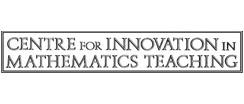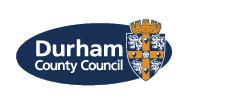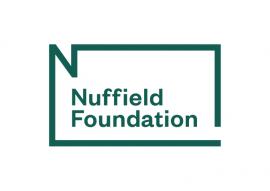Simple Probability Experiments
The topic area of probability provides a good opportunity for students to engage in practical work as a means of gaining an understanding of the basic principles of probability. This resource package contains a variety of activities providing opportunity for students to record and describe the outcomes of simple probability experiments involving randomness, fairness, equally and unequally likely outcomes using appropriate language and use and understand the 0-1 scale.
Visit the secondary mathematics webpage to access all lists.
- ALL
- Teacher guidance
- Textbook
- Group work
- Activity sheet
Teacher guidance
Probability
This resource contains four interactive excel files dealing with:
Probability Line and Simple Examples
This excel file begins with the probability number line labelled with fractions, decimals and percentages. The next two interactive sheets pose problems about selecting a coloured ball from a bag with answers shown as a fraction, simplified fraction and percentage. Other sheets pose questions about selecting a letters from a given word and rolling a single die. The final interactive sheet shows the possibility space when two dice are thrown and the answers to the questions posed are shown as fractions and simplified fractions.
There are a further five sheets of questions which may be suitable for use in the classroom.
Probability: Biased Coins
This short interactive program illustrates the effect of bias when a number of coins are tossed. The first sheet deals with the experiment when 10 coins are tossed when the probability of getting a head can be altered. The probability of getting a particular number of heads is shown in a table (alongside the cumulative probability) and in a bar chart. The second interactive sheet deals with a similar experiment when 20 coins are tossed.
There are three more sheets of questions which may be suitable for use in the classroom.
Probability: Relative Frequency
This excel file simulates selecting an object from a given number of objects in a bag. The outcomes are shown in a tally chart and the problem is to predict how many of each coloured object there are in the bag. The contents of the bag can be revealed on a separate sheet.
Probability: Two Events
This interactive file starts gently with a sheet showing the 52 cards in a standard deck. Questions are posed about the probability of selecting a single card and answers can be revealed. The next two sheets deal with probabilities associated with selecting two cards, one with replacement and the other without replacement. The outcomes are shown on tree diagrams and the probabilities on each branch can be revealed. The problem of rolling two dice is similarly dealt with on the next two sheets with one of them using biased dice. The final interactive sheet uses a tree diagram to illustrate the solution to problems related to selection of objects from two different bags.
There are a further eight sheets of questions which may be suitable for use in the classroom.
Textbook
Probability
In Probability students explore the use of the probability scale by considering a number of examples which are useful when introducing probability. The activity file describes a dice game in which students have to experiment to determine the probability of wining. The second activity explores a Russian fable which tells of an experiment to determine who is to be married next. The third experiment investigates the likelihood that people will have the same birthdate.
Group work
Probability Mystery
This resource has fourteen cards with statements about the likelihood of six different runners winning a race. Students are tasked with using the statements on the cards to determine who is most likely to win the race, with what probability, and in what sequence they would expect the runners to finish.
The mathematics that students need to complete the challenge is knowledge of the probability scale, to understand the probability of certainty; ‘evens chance’, likelihood and chance.
Ordering Probabilities S1
In this resource students learn to understand that probabilities are assigned values between 0 and 1. Students decide an appropriate value for the probability of a given event and use some of the vocabulary associated with probability such as ‘certain’, ‘impossible’, ‘likely’. They will develop their ability to order decimals between 0 and 1. Students should have some experience of decimal numbers.
Evaluating Probability Statements S2
In this resource students discuss and clarify some common misconceptions about probability. This involves discussing the concepts of equally likely events, randomness and sample sizes. Students also learn to reason and explain. This session assumes that learners have encountered probability before. It aims to draw on their prior knowledge and develop it through discussion; it does not assume that they are already competent.
Activity sheet
Handling Data 2
This resource has nine handling data units. Unit 3 is the section of work appropriate to this topic. In Understanding and using the probability scale students are presented with a number of different situations in which they have to use a number line and appropriate vocabulary. In Probability using different numbers, students use fractions, decimals and percentages to represent probabilities. Making conjectures and analysing results requires students to use the results of experiments to make predictions.
Probability
This resource contains investigations, worksheets and practical activities. The activities appropriate to this topic in probability pack one are:
Likely or unlikely in which students are asked to categorise probability statements.
Experiments where students throw a dice sixty times and record the results.
Strange dice game in which students have to decide whether or not the game is fair.
Lucky dip in which students attempt to decribe the results from an experiment.
Fair play in which students determine whether a game is fair.
How likely which contains experiments with spinners and a probability scale.
Good ideas for Probability
These activities encourage students to develop their own games with appropriate time to work on them and test out their hypotheses.
Horse Race asks students to investigate whether this is a fair game.
Crossing the River involves students playing a game and then modifying it to determine whether it is now easier or harder to win and why.
21 Dice asks students to experiment with differently numbered dice to find the highest totals possible when the die is thrown and the numbers are added together.
Bingo encourages students to invent their own variation of the game by experimenting with other types and numbers of dice with appropriate bingo cards.
Snap involves students using a subset of cards from a full pack to play a game of snap, record their results then investigate what happens with different subsets.
Pinball Machine is an experiment to determine whether or not a particular pinball machine would produce a profit.
Roll a Penny is an experiment with grids of different sizes and the probability of achieving a desirable outcome.
Students can be placed in groups, each group investigating a diffrent game. Groups can present their findings to the rest of the class.








